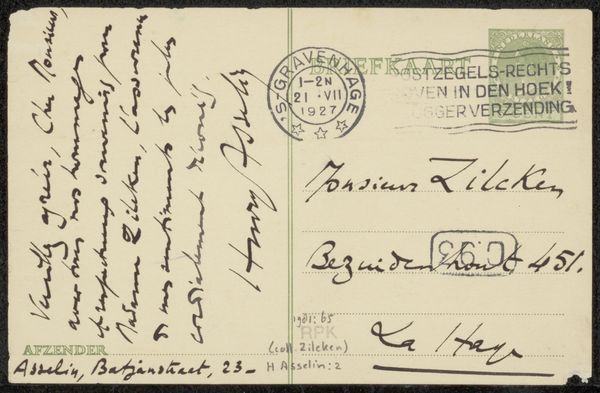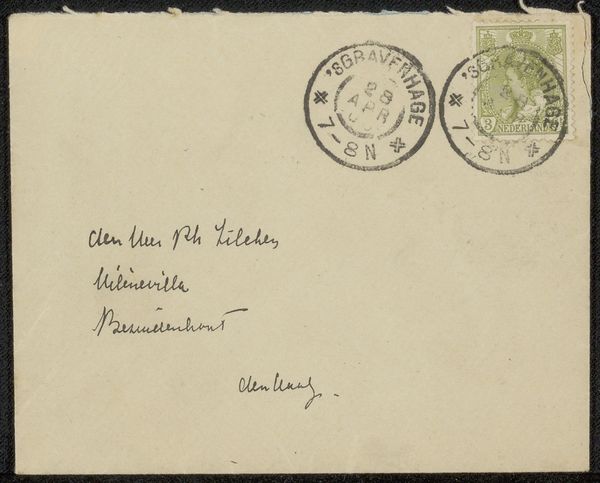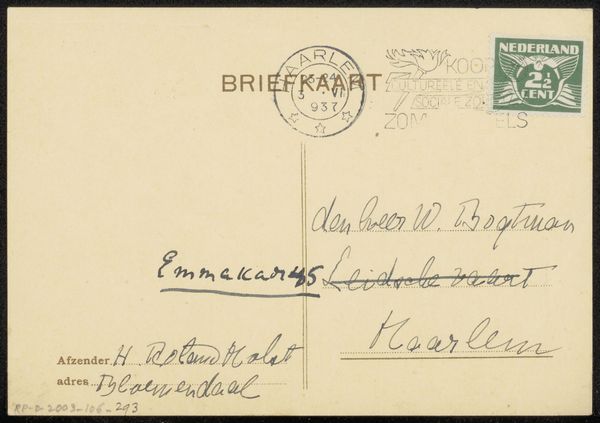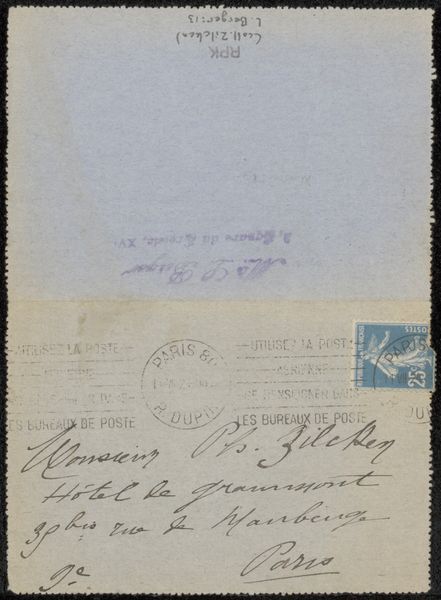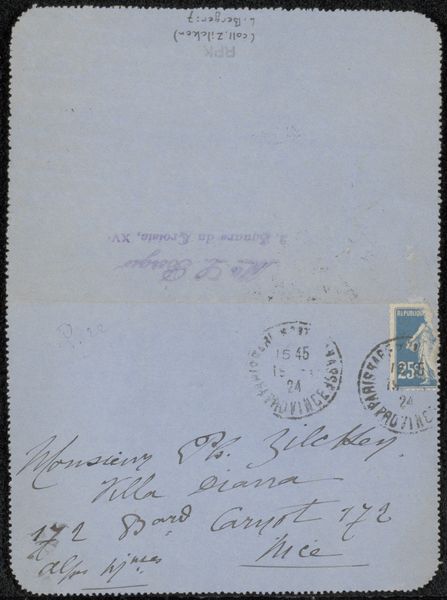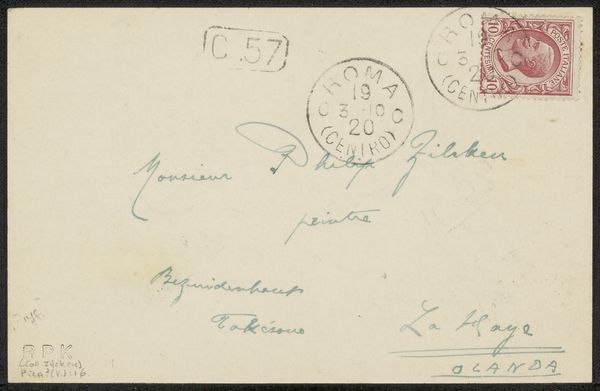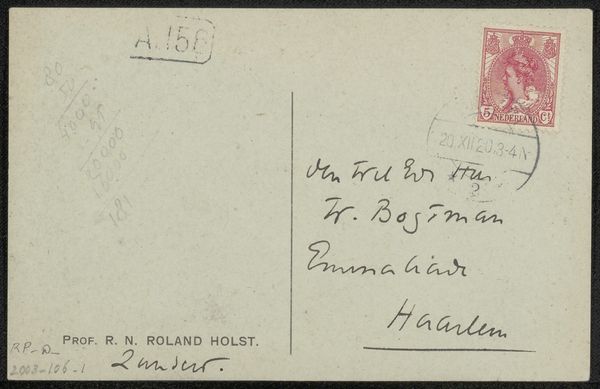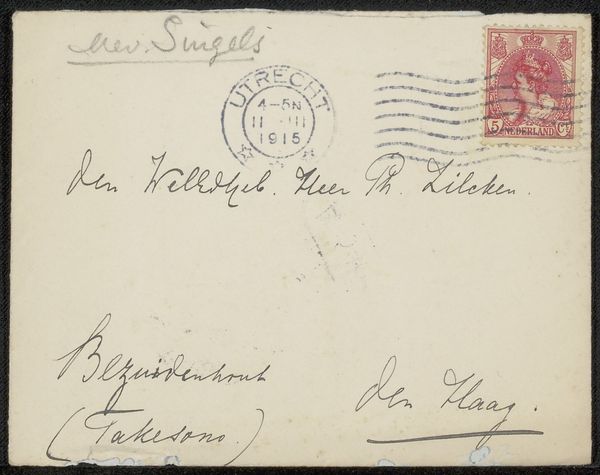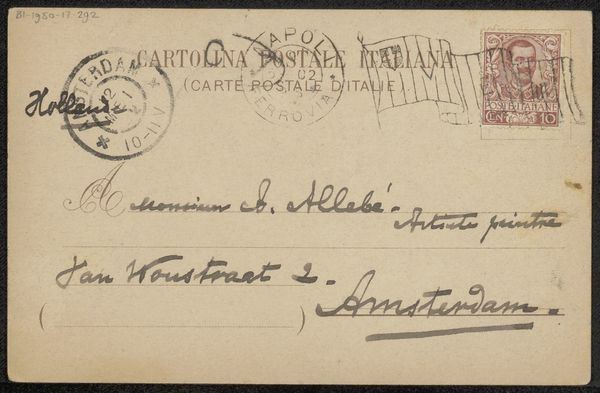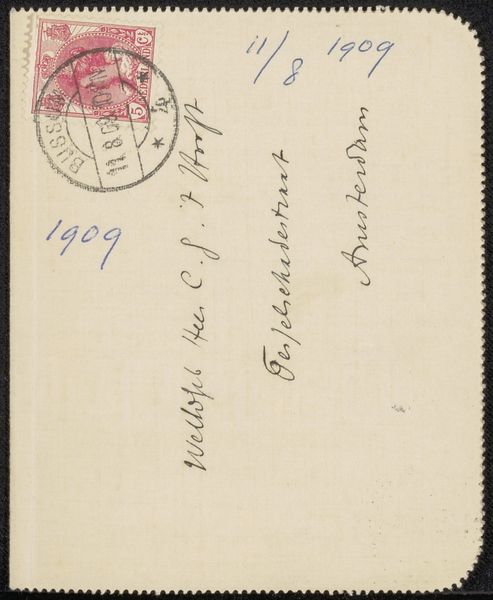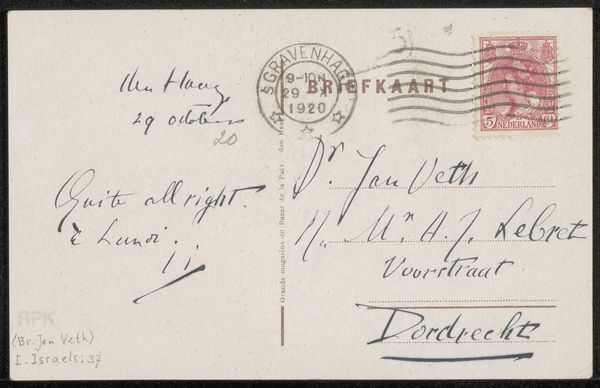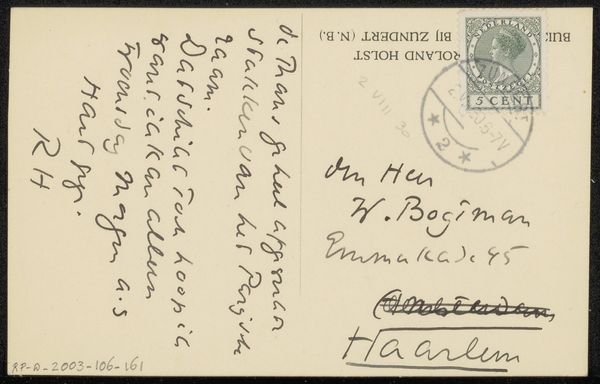
drawing, paper, ink, pen
#
drawing
#
paper
#
ink
#
pen
Copyright: Rijks Museum: Open Domain
Curator: This intriguing piece, an envelope addressed to Louis Frédéric Schützenberger, offers a small window into the artistic circles of late 19th-century Paris. The artwork is by Jean-François Gigoux, dating to around 1889. It’s made using pen and ink on paper, and is part of the Rijksmuseum collection. Editor: Hmm, initially it strikes me as humble. An everyday item transformed into art just by its age and connection to someone significant, I guess? Sort of muted and faded, like a half-remembered dream. Curator: Absolutely. It functions as both a historical document and a miniature portrait of artistic exchange in that era. Correspondence provides fascinating, direct insights into the networks and support systems artists relied on. The fact that this communication was intended for Schützenberger, also an artist, suggests a community built around mutual understanding and perhaps even collaboration. Editor: Makes you wonder what was inside, doesn't it? Maybe a casual invitation or a fierce debate about art. And look at Gigoux's signature, bold in blue ink across the top left! A confident declaration of identity, almost as if asserting his presence on this ephemeral object. I love the imperfection of the stamp placement, it humanizes the whole thing. Curator: Exactly. Even the location on the envelope "artiste peintre" tells us something, placing him directly into his social context. Think too about the labor involved - both artistic and postal! These details, the handwriting, the postmark of Paris in April 1889 all add to its historical value, providing layers of context we can explore. We could see how state postal systems served political ends by connecting people and the places where they lived, too. Editor: Right, and that fading ink... each imperfect stroke seems so loaded with feeling! Now it feels so intimate. I’m considering not just what was written but about what the material tells of labor, networks, and the artist's own hand. Almost makes you nostalgic for a time when communication wasn't instant, for the weight of anticipation waiting for a letter to arrive. Curator: Precisely. It’s these nuances, these layered stories within the physical artifact, that give it significance beyond its seemingly mundane form. We’re left pondering networks of production but the materiality and production. Editor: I will not lie; I walked into a mundane historical piece, but now find I want to reflect on that connection between artists. Thanks for pulling the art history in!
Comments
No comments
Be the first to comment and join the conversation on the ultimate creative platform.
